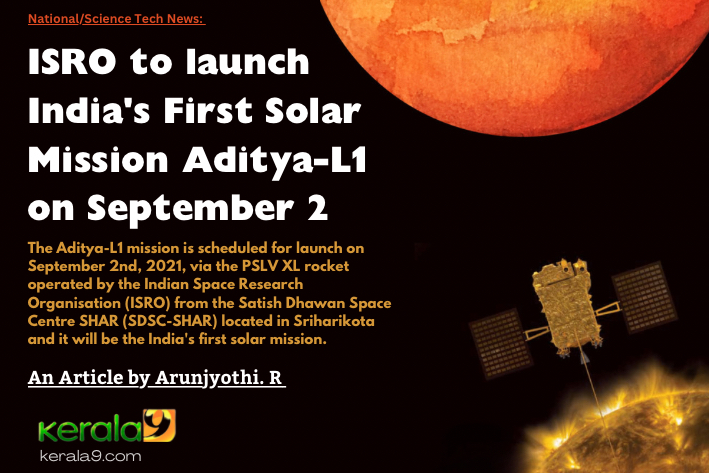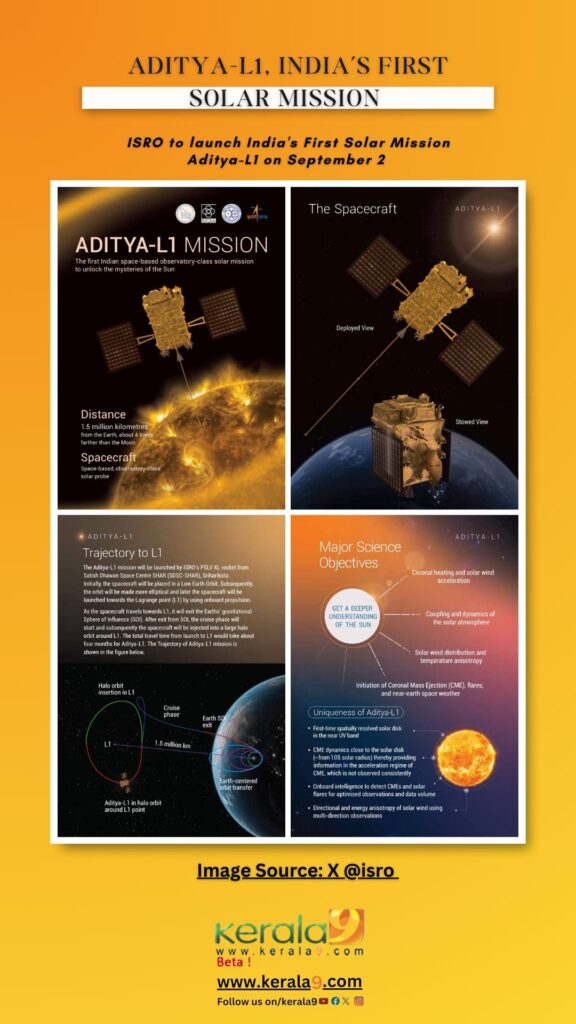The Aditya-L1 mission is scheduled for launch on September 2nd, 2021, via the PSLV XL rocket operated by the Indian Space Research Organisation (ISRO) from the Satish Dhawan Space Centre SHAR (SDSC-SHAR) located in Sriharikota and it will be the India’s first solar mission.

The Indian Space Research Organisation (ISRO) has done it again! After the successful Chandrayaan-3 mission, ISRO is now gearing up for its next big space mission. And this time, it’s going to be out of this world! Get ready to witness history in the making as ISRO launches its first-ever space-based solar observatory, Aditya-L1, on September 2.
This is a momentous occasion for ISRO as it marks India’s first dedicated mission to study the Sun. Aditya-L1 is set to revolutionize our understanding of the Sun and its impact on our planet. And the best part? The spacecraft will be placed in a halo orbit around the Lagrange point 1 (L1) of the Sun-Earth system, approximately 1.5 million kilometers from Earth. This strategic positioning will allow continuous observation of the Sun without any eclipses or occultations.
The Aditya-L1 mission will study the Sun from an orbit around the L1. It will carry seven payloads to observe the photosphere, chromosphere, and corona in different wavebands. According to an ISRO official, Aditya-L1 is a fully indigenous effort with the participation of national institutions.
The Aditya-L1 mission is primarily focused on achieving several key scientific objectives. These objectives include the investigation of the dynamics of the solar upper atmosphere, specifically the chromosphere and corona. Additionally, the mission aims to study the heating of the chromosphere and corona, the physics of partially ionized plasma, the initiation of coronal mass ejections and flares, and the in-situ particle and plasma environment. The latter provides valuable data for the study of particle dynamics originating from the Sun, as well as the physics of the solar corona and its heating mechanism.
Furthermore, the Aditya-L1 mission seeks to examine the diagnostics of the coronal and coronal loops plasma, including temperature, velocity, and density. The mission also aims to investigate the development, dynamics, and origin of coronal mass ejections, as well as identify the sequence of processes that occur at multiple layers, such as the chromosphere, base, and extended corona, which ultimately lead to solar eruptive events. Additionally, the mission will explore magnetic field topology and magnetic field measurements in the solar corona, as well as drivers for space weather, including the origin, composition, and dynamics of solar wind.

To achieve these objectives, the instruments of the Aditya-L1 mission have been specifically designed to observe the solar atmosphere, with a particular focus on the chromosphere and corona. In-situ instruments will also be utilized to observe the local environment at the L1 point.
So, mark your calendars and get ready to witness history in the making. Join ISRO on September 2 as they launch Aditya-L1 from the Satish Dhawan Space Centre in Sriharikota at 11:50 Hrs. IST. Don’t miss out on this once-in-a-lifetime opportunity to witness India’s first dedicated mission to study the Sun. Let’s support ISRO in their quest for knowledge and exploration of the final frontier!



























